Since University of B. C. President Arvind Gupta resigned unexpectedly last August, the institution’s managers and governors agreed to remain silent and move records and answers to non-disclosure agreements and privacy protection.
After five months of Freedom of Information requests, UBC released a partial disclosure of records related to Gupta’s resignation. One answer is implicit and explicit in the disclosure: if you want to know why UBC managers resist change, follow the money.
On the record, a rift formed between Gupta, the Dragon’s Den leader, and emotionally vulnerable middle managers. “You are deemed too quick to engage in debate in a confrontational or dismissive manner,” Gupta was scolded, “which is demoralising to a group of executives in fear of their employment security.” Gupta was not Presidential.
Off the record, there’s another storyline, perhaps more realistic.
One of the largest employers in British Columbia – $2.1 billion operating budget – the university and its Properties Trust have for years been given free passes in the court of accountability. This conceit percolates down through the ranks of middle management.
Gupta was hired in the fallout of serious financial fraud cases within the Faculties of Medicine and Dentistry. Controversies, such as the Sauder School of Business students’ rape chant in September 2013 had chipped away confidence in the ranks of management.
Senior campus administrators had seemingly looked the other way as internal investigations into management pointed to no one and nothing for accountability. The free pass for managers was status quo when Gupta was hired at UBC.
Three months in, Gupta targeted university finance and management for overhauls. The Vice President Finance was let go and the Provost was moved to an adviser’s post.
At this point, it began to look like a policy of administrator accountability had suddenly arrived on Point Grey. Administrative bloat and perks were finally called into question. The pushback was fierce as middle managers, deans, and their numerous assistants and associates, grew anxious and more insecure.
Stamping out fires, Gupta wrote on May 1 to the Chair of the Board of Governors: “Things seem to be going well with the Deans now (or at least I think so).” The doubt signalled that behind-the-scenes middle managers were conspiring under turf war conditions.
Accountability was pushed back up to the President: “we are still not certain that you fully appreciate the scope of your accountability,” Gupta was told in mid-May. “You must refrain from thinking controversial thoughts out loud.”
Gupta redirected priority to allocating finances to classrooms and hiring of faculty members, and away from bloated administrative ranks. For instance, the ranks of assistant and associate deans swelled from 47 in 2000 to 72 in 2015. Senior administrators and deans had long protected their prerogative of appointing at these managerial ranks and resisted even the slightest consideration of regulation through a proper hiring policy.
It didn’t matter to a balance of managers that Gupta was successful in attracting $66.5m in Federal research funding in late July. At the same time, he was called into meetings to answer to pushback. The Board formed an ad hoc committee to erode confidence. On August 7, he resigned.
Not one to rock a boat at a birthday party, Interim President Martha Piper stepped in to celebrate UBC’s 100th and restore business as usual and the free pass for management. Champagne corks were popping in September.
In December, Piper rushed the Board to once again approve student tuition increases across the campus. At the year’s major budget meeting in mid-January, with all the deans providing their faculty’s financial status and plans, the sole message to members of UBC was that the president said the ‘presentations were excellent.’ With deficits run up in the faculties, budgets are in a mess, but the PowerPoint slides are beautiful.
Of course arrogance, cronyism, and hubris have their limits, even at UBC. Since Gupta’s resignation, the university has bounced from one crisis to the next. The university is slipping again into a crisis of financial management. Why are managers resisting? Follow the money.
Stephen Petrina, Sandra Mathison, and E. Wayne Ross are Professors in the Faculty of Education at the University of British Columbia and co-directors of the Institute for Critical Education Studies.

 Follow
Follow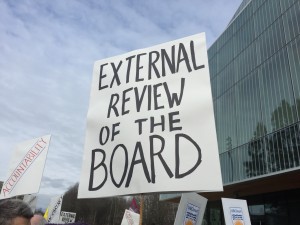
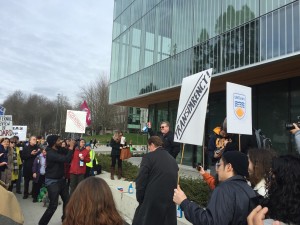
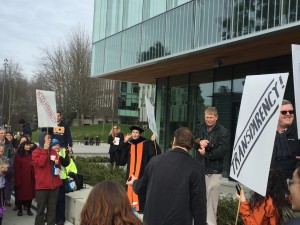
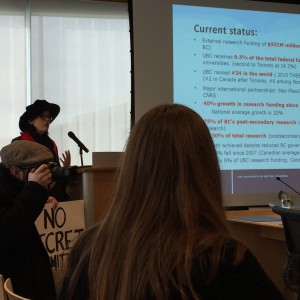
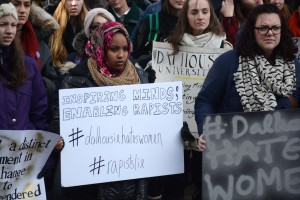
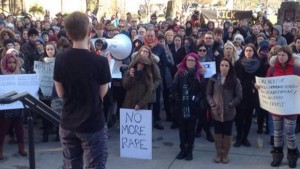

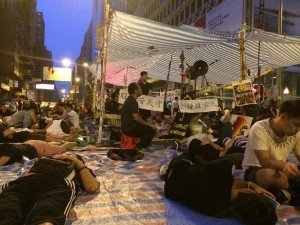
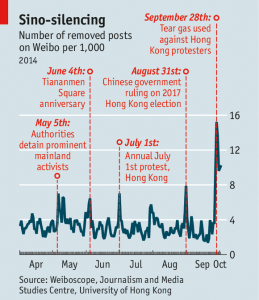
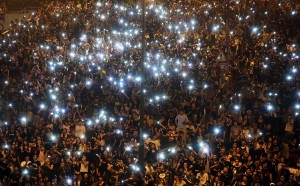
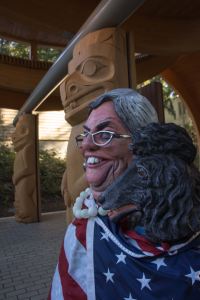
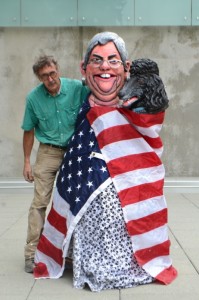 THE CASE OF THE MISSING SCULPTURE
THE CASE OF THE MISSING SCULPTURE
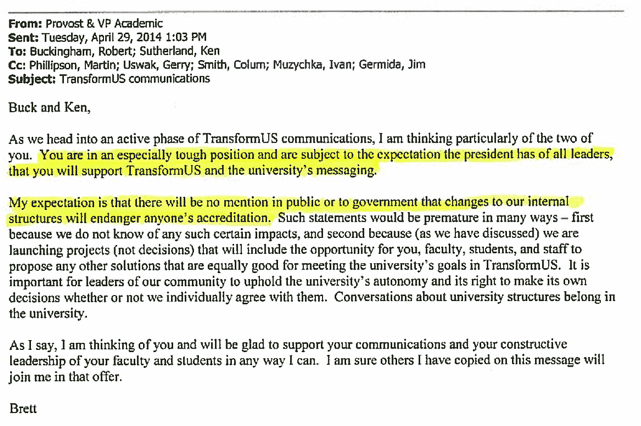
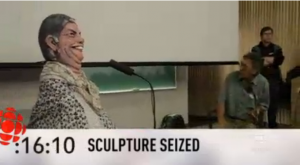
#UBC time to lay down the mace in graduation and governance #ubcnews #bced #highered
*Apologies to the medievalists again. Customized below is our semi-annual appeal to UBC managers to Lay Down the Mace:
As we count down to and roll through graduation, can we please remove the mace from convocation and governance at the University of British Columbia? The mace had its day in the first 100 years of this esteemed University but that day has gone.
Dalhousie University is currently embroiled in controversy over its mace, decorated as it is to demonstrate racial supremacy (“the rose, thistle, fieur-de-lys, and shamrock, depicting the major racial groups of our country”). Indigenous peoples and advocates have said enough already.
Some traditions just aren’t worth maintaining…
At the Nexo Knights’ Graduation Day,
Jestro grabbed a sword, a mace, and a spear and began to juggle them… The unimpressed crowd started to boo… Sweat broke out on his forehead…. He let go of the mace, and it flew across the arena. The crowd gasped and ducked… Then … bam! It hit the power grid on the arena wall. The area lights flickered, then turned off. Soon the power outage surged throughout the city.
Yes, this really did happen in a Lego story! And in England, Bradford College faculty members called the admin’s decision to spend £24,000 on a new mace for graduation ceremonies a “crass bit of judgement.”
At UBC, things were questionable again this past year. With an opportunity to follow faculty and staff members’ and students’ proposal to divest from fossil fuel investments, in mid February UBC chose to continue to be a part of the problem of climate change instead of the solution. Still heavily invested. And after chalking up a $22m budget surplus, in April & May UBC jumped the line at Wholefoods to draw $7,230 in grocery bag donations. On 24 April an Open Letter signed by 110 faculty members was submitted to the UBC Chancellor Reappointment Committee questioning the process.
The days of the mace in Convocation and governance are of the past and that part of the past is no longer worth reenacting.
It’s difficult to know where this University now stands or what it stands for.
It is time to retire the mace, symbol of aggression, authority, and war. It’s time to march to graduation ceremonies in late May and November with open and empty hands as symbolic of peace and reconciliation of controversies and roles of the President’s Office.
UBC’s mace is a relic but a relic of what? The mace is symbolic speech but what is it saying about us now?
From ancient times, this club, this weapon of assault and offence, the mace was gradually adorned until the late twelfth century when it doubled as a symbol of civil office. Queen Elizabeth I granted her royal mace to Oxford in 1589. From military and civil power derives academic authority. The rest is history and it is not all good.
Dr. Thomas Lemieux, School of Economics, with UBC’s Mace at the May 2015 Convocation.
It is time to retire the macebearer, whose importance is inflated every year by the image’s presence on UBC’s graduation pages leading to Convocation. In pragmatic terms, if the mace falls into the hands of the wrong macebearer or manager at this point, someone’s liable to get clocked with it.
Is UBC’s mace still a respectable appendage to Convocation?
Remember, since that fateful November day in 1997, just five months into Martha Piper’s Presidency, when student activists put their bodies and minds on the line at the APEC protest, Tuum Est adorns both the can of mace sprayed in their eyes and the ceremonial mace that the President’s Office is eager to carry across campus every November and May.
Is it not time to retire the mace?
Comments Off on #UBC time to lay down the mace in graduation and governance #ubcnews #bced #highered
Posted in Academic freedom, Academic Labor, Accountability, BC Education, Budgets, Commentary, Critical University Studies, Faculty, Governance, Maces, Shared governance, Students, Working conditions
Tagged Academic freedom, Faculty, Global Warming, Governance, Protests, Students, University presidents, Working conditions